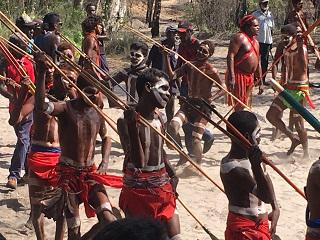At nearly 20,000 square kilometres, the South East Arnhem Land Indigenous Protected Area (IPA) spans most of south east Arnhem Land along the far western Gulf of Carpentaria from Blue Mud Bay to the mouth of the Roper River – where tidal flats meet vast coastal plains backed by rugged sandstone uplands. The vegetation is predominately open eucalypt woodlands with paperbark and monsoon rainforests along waterways or in moister pockets. In the north, tall eucalypt woodlands occur on the deepest soils, while a mosaic of native grasslands, vine thickets, samphire and mangroves characterise the coastal lowlands. The IPA is managed by an Advisory Committee of senior elders from the Ngukurr and Numbulwar communities, who oversee the Northern Land Council managed Yugul Mangi & Numbulwar Numburindi Amalahgayag Inyung Indigenous Ranger groups.
The South East Arnhem Land IPA consists of the traditional estates of over 20 clans who speak of themselves as Yugul. Yugul Mangi is a term for all our people, coming together and speaking as one. Their Country comprises a patchwork of homelands with twenty established outstations, each belonging to a particular family group, or clan. All homelands are associated with significant cultural sites and all are enormously important, as they reflect the pattern of our traditional land use and ownership. Homelands are places at which ceremonies occur, bush tucker is collected or hunted and where history, stories and traditional ways are passed on to our children. Sea Country is particularly important, as we have always relied on the sea for our livelihoods. It is part of our culture; our Dreamtime ancestors created marine sites and features just as they did on the land.







